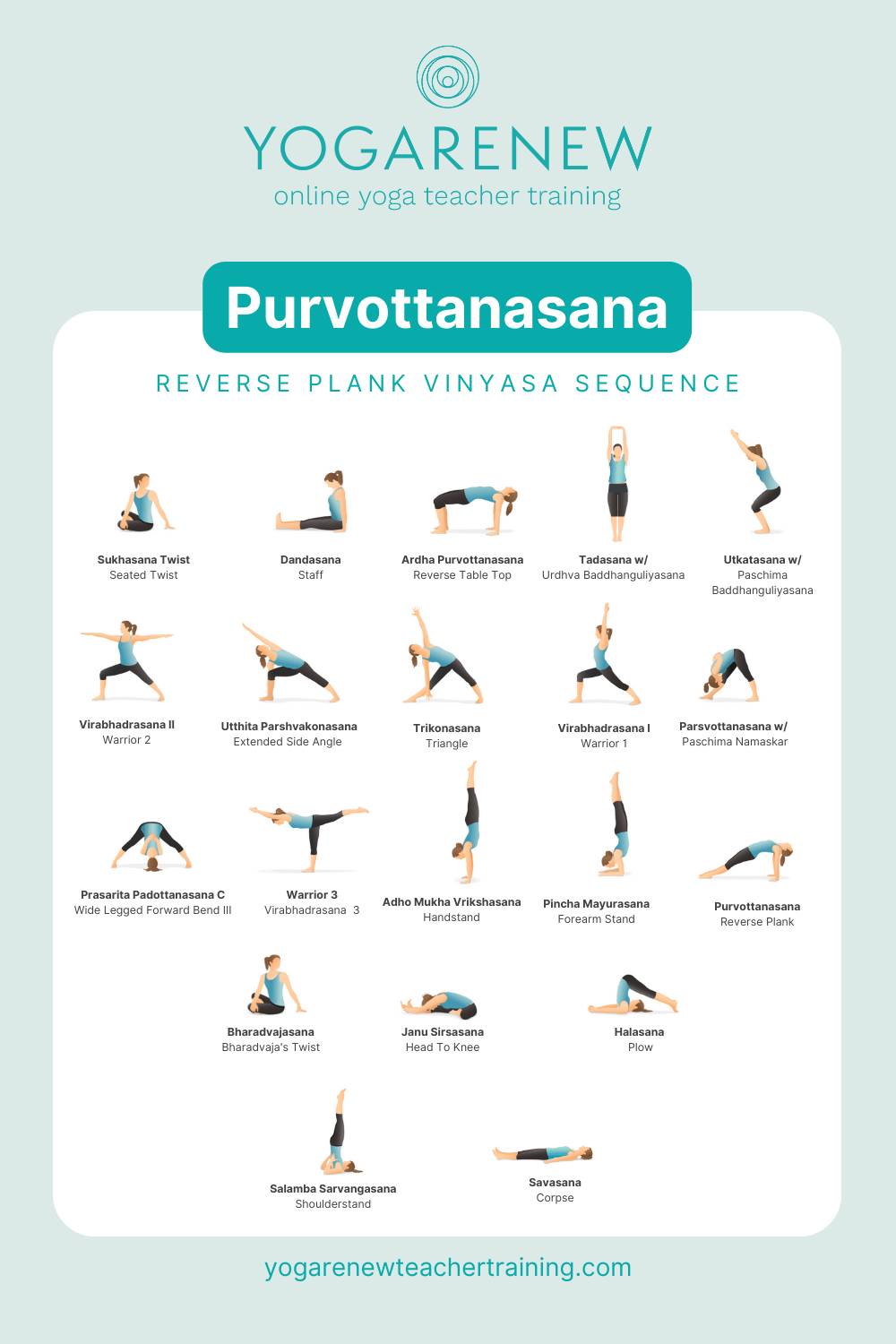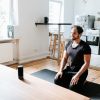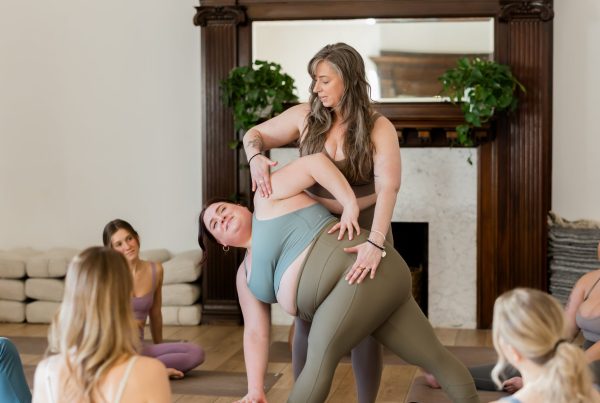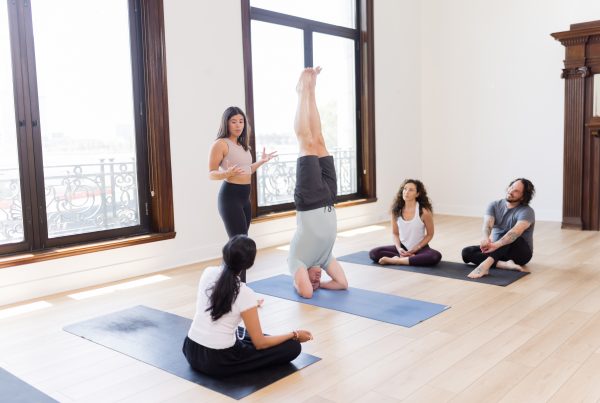
Purvottanasana, is translated as, “an intense stretch of the front of the body,” but often referred to as reverse plank. Purvo translates as east, which refers to the front body and Uttana is translated as intense stretch. Purvottanasana is a supine backbend meaning the front body is facing upward, similar to Urdhva Dhanurasana or Supta Virasana.These backbends have a different orientation then the prone backbends like Salabhasana or Dhanurasana in which the front of the body is facing downwards towards the floor.
Generally speaking, practicing backbends rejuvenate the spine, and develop physical strength and vitality to the entire body. They are mentally uplifting and keep the mind sharp and alert. Specifically, Purvottanasana strengthens the wrists, arms, shoulders and back as well as the ankles and hamstrings. It also improves mobility of the spine and shoulders and opens and stretches the pelvis and chest. This intense opening of the front body reduces fatigue and boosts the spirits.
Purvottanasana is considered a basic backbend as it teaches students how to extend the spine properly as they gain the strength and flexibility required for more advanced backbends. In this sequence, we focus on lifting both the pelvis and the chest with the support of the back body. The opening of the pelvis comes from the thigh bones moving back while simultaneously moving the tailbone forward and down. This creates opening in the pelvis and stability in the lumbar spine. The opening of the chest also comes from the shoulder blades moving in and down, which lifts the back ribs and opens the heart. Ultimately, the entire front body is open and spacious with the support of the entire back body underneath.
In this sequence, we start with poses like sukhasana twist, reverse table top, and paschima baddhanguliyasana, that move the upper arm bones back to lift the corners of the chest. This is a key action that supports the opening of the front body because it allows the shoulder blades to press into the back ribs thereby lifting the heart. The standing poses, in general, open the body in all directions, but the focus while practicing should be on the integration of the tailbone and shoulder blades from the back body to the front body. Next, we move to the wall to work on handstand and forearm stand. Even though the arms are overhead, not behind the torso as in Purvottanasana, the actions of the legs, tailbone, torso, and upper back are similar to the actions required to perform Purvottanasana.
We are now prepared to work on Purvottanasana. Combining the actions learned in the various poses prior, the opening of the pelvis and chest should be familiar. Sit in Dandasana, with your hands by your side, fingers facing forward. Bend your knees and lift your hips as high as possible. Draw your shoulder blades in and lift your chest. If possible, extend the legs one at a time. Stay for a few breaths and come down. Repeat one or two more times.
Winding down after Purvottanasana, we start with Bharadvajasana, a seated spinal twist to neutralize the spine after backbending. Halasana also helps open the back after deep back bending which is why it is included before Shoulderstand and eventually towards final relaxation, Savasana.
Puttering/Warm-Up:
- Sukhasana Twist
- Dandasana
- Reverse Table Top
- Downward Dog
- Tadasana w/ Urdhva Baddhanguliyasana
- Utkatasana w/ Paschima Baddhanguliyasana
Sun Salutations:
- 3-4 Rounds
Standing Poses:
- Warrior 2
- Extended Side Angle
- Trikonasana
- Utkatasana
- Warrior 1
- Parsvottanasana w/ Paschima Namaskar
- Prasarita Padottanasana C
Balance Pose:
- Warrior 3
Invert:
- Handstand
- Forearm Stand
Peak Pose:
- Purvottanasana
Seated:
- Bharadvajasana
- Janu Sirsasana
Wind Down:
- Halasana
- Shoulderstand
Savasana
Give it a try and let us know how it goes! To catch a few video clips of this sequence in action follow Patrick Franco and @yogarenewteachertraining on Instagram and if you want more in-depth vinyasa sequences like this along with teaching notes + tips on how to cue them, enter your email below to grab our FREE guide:










